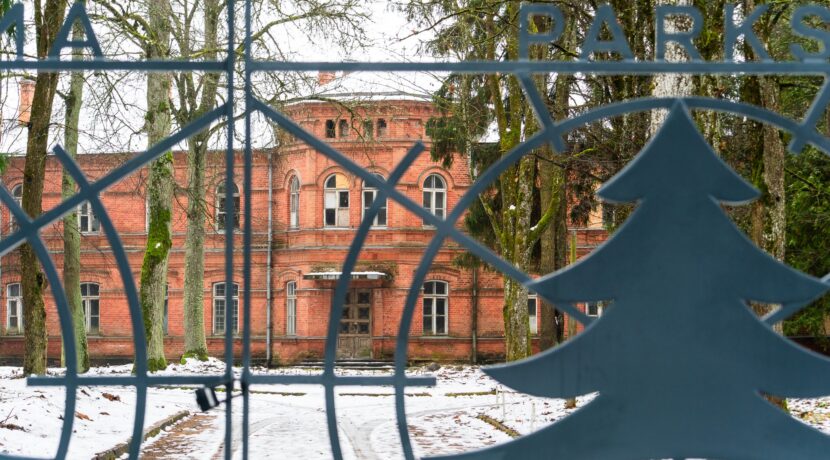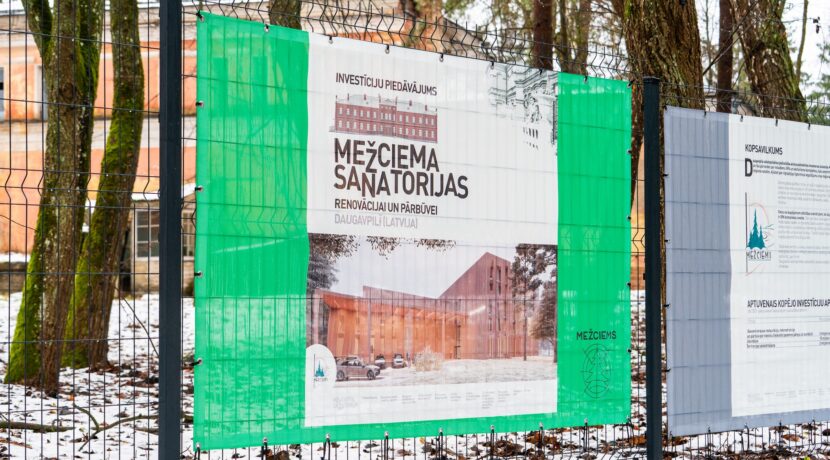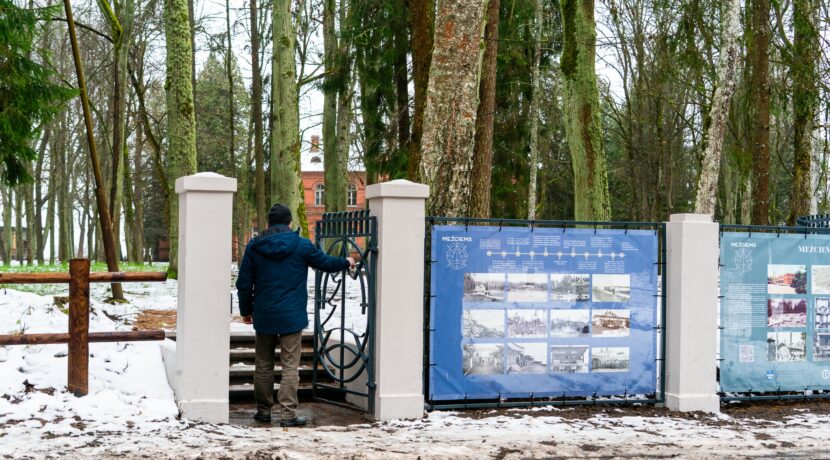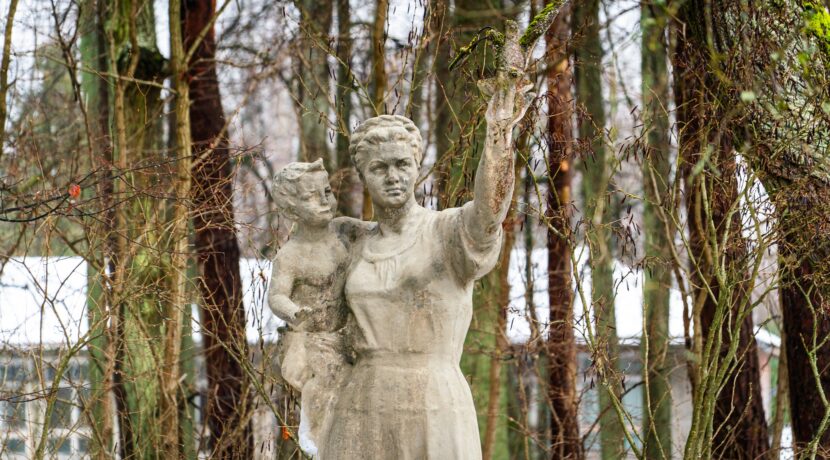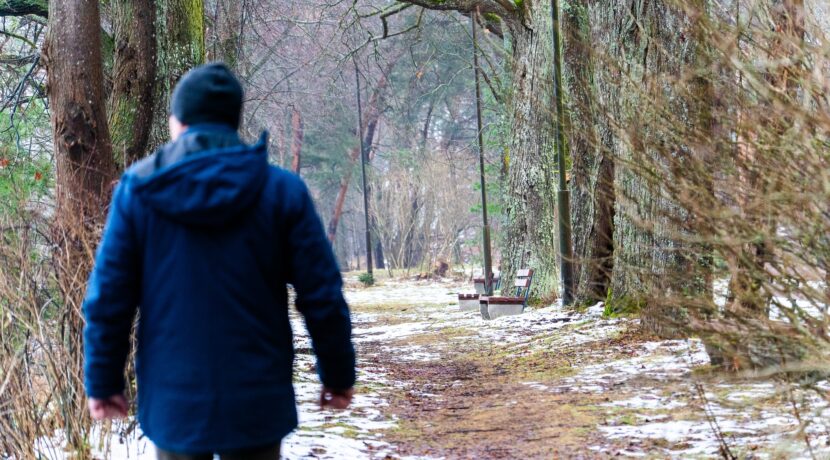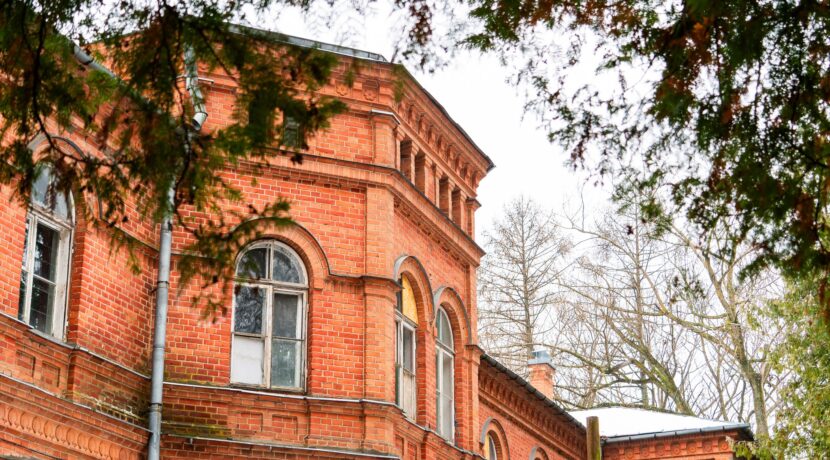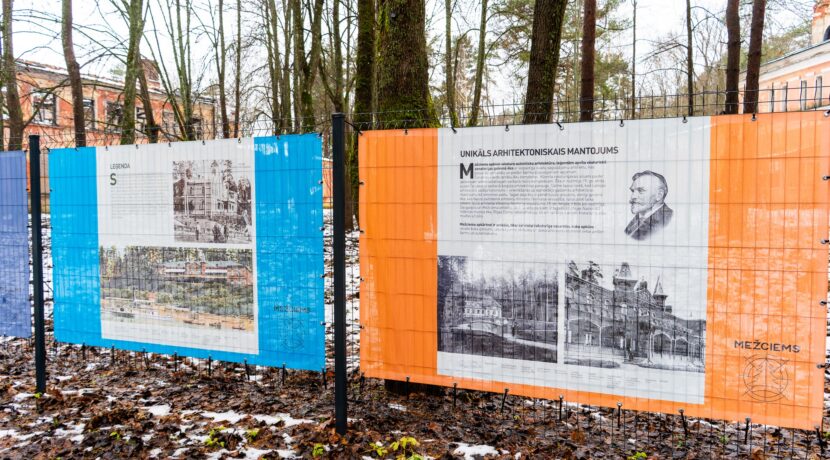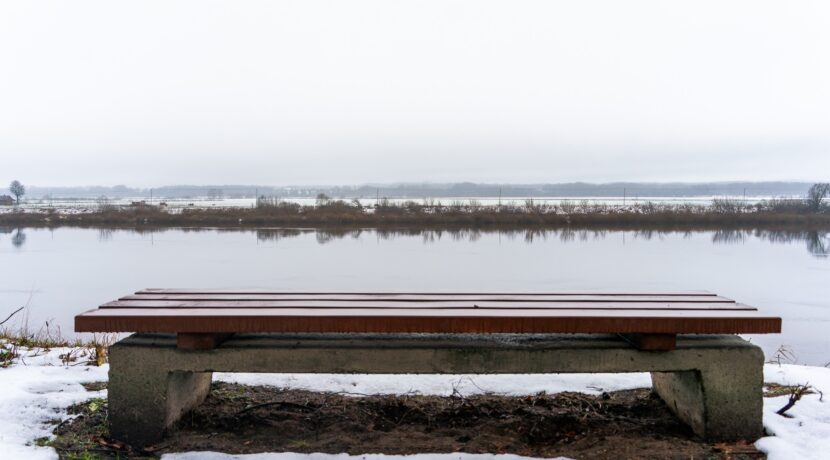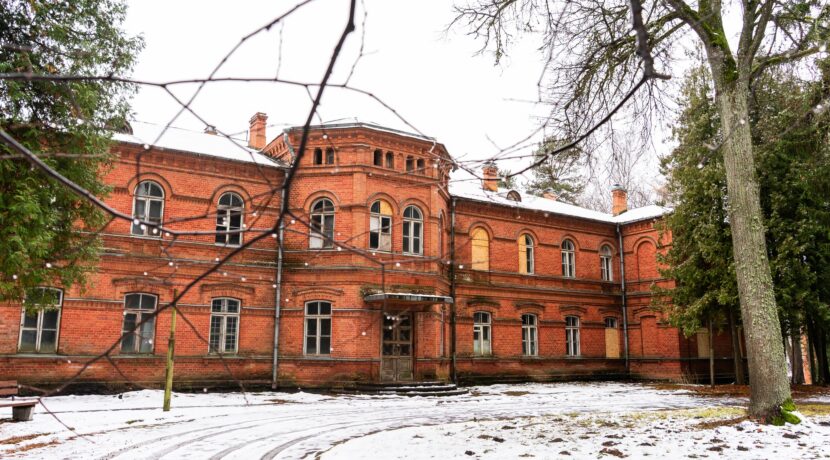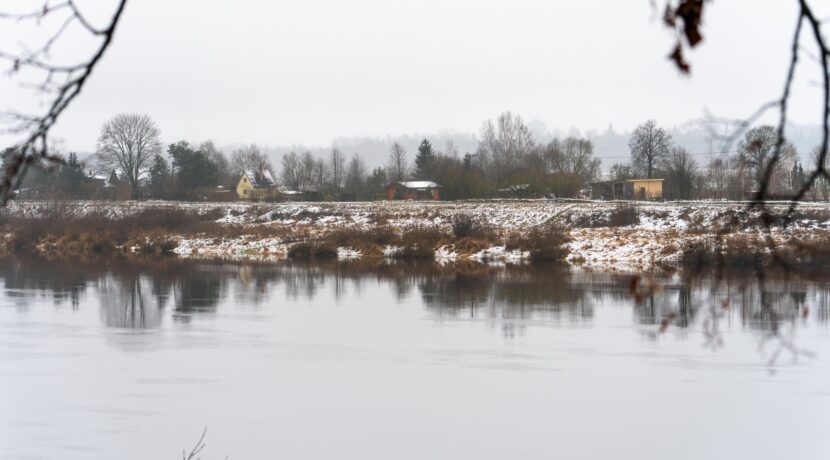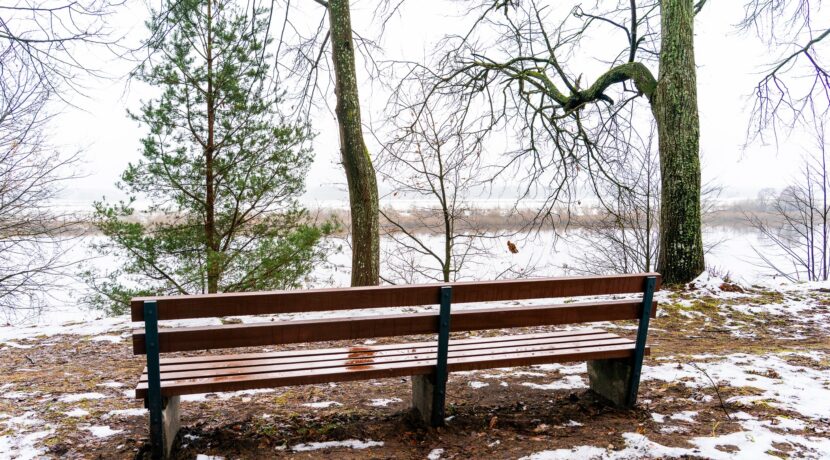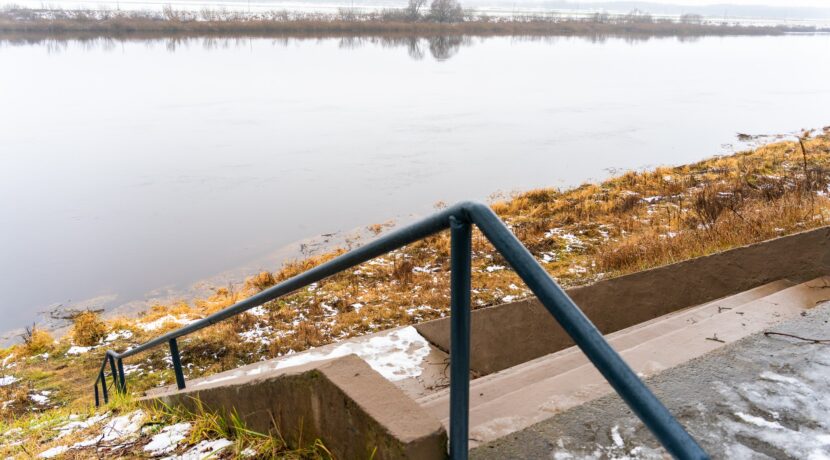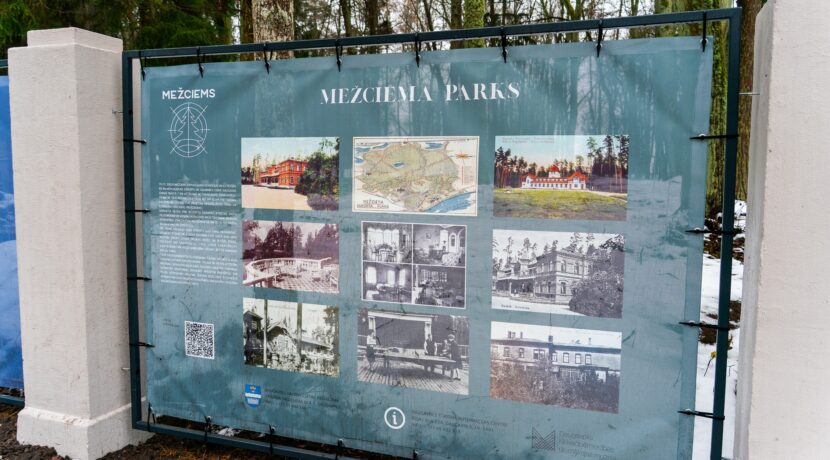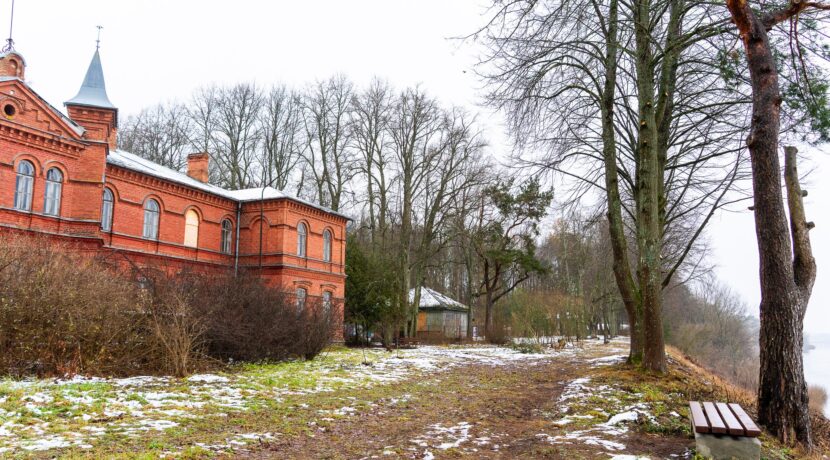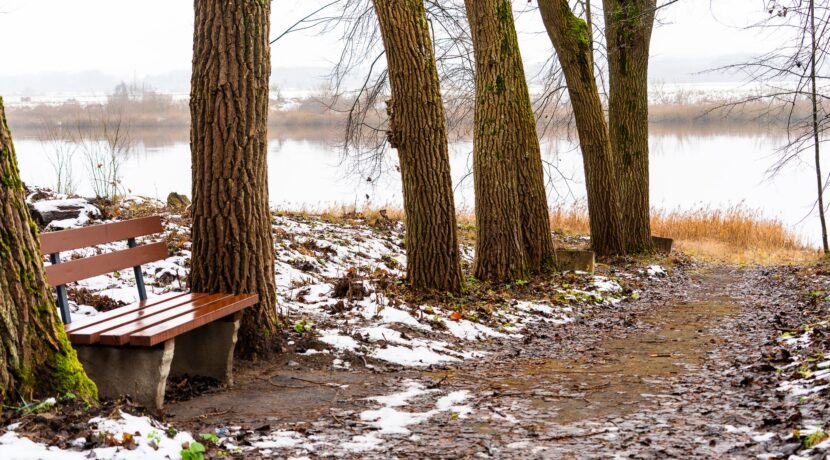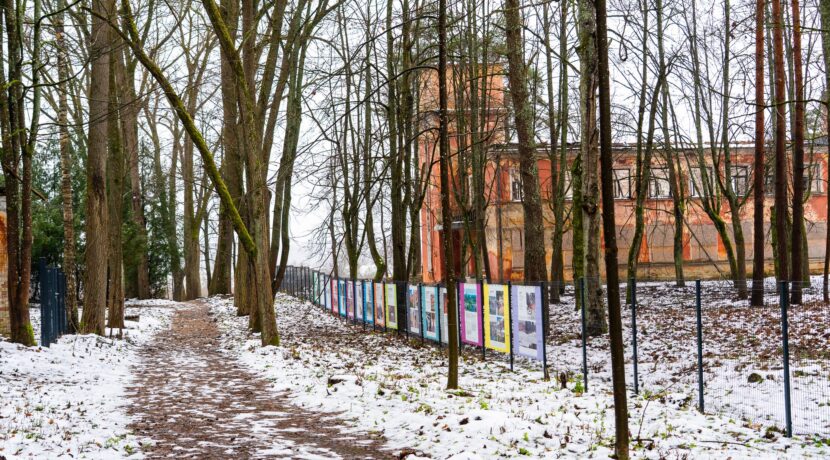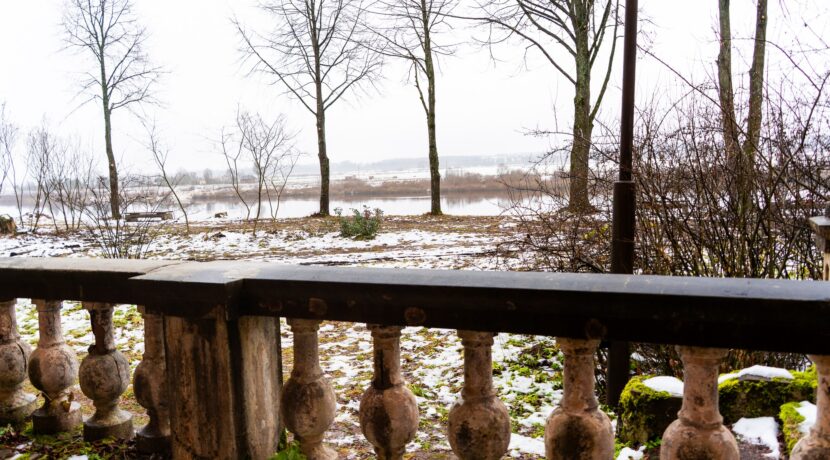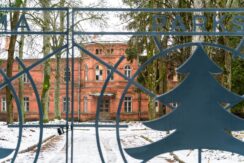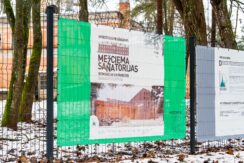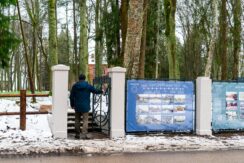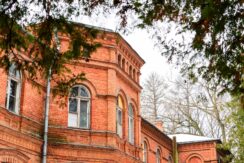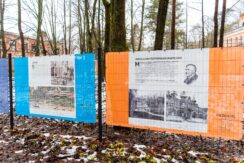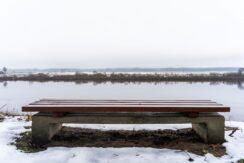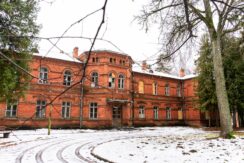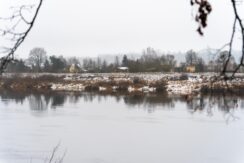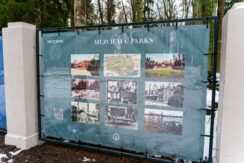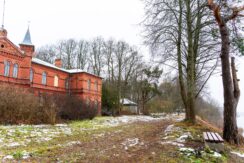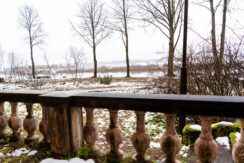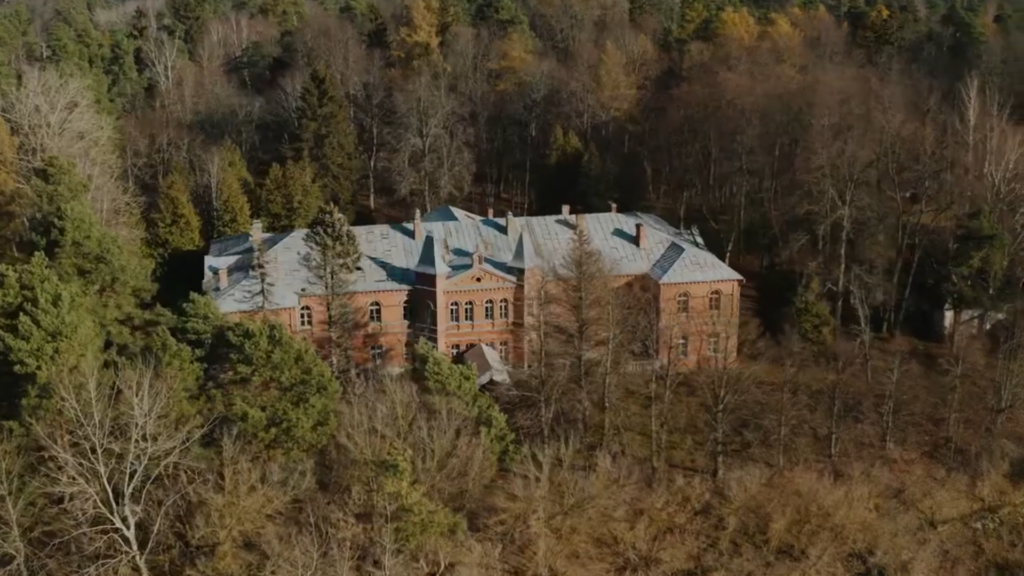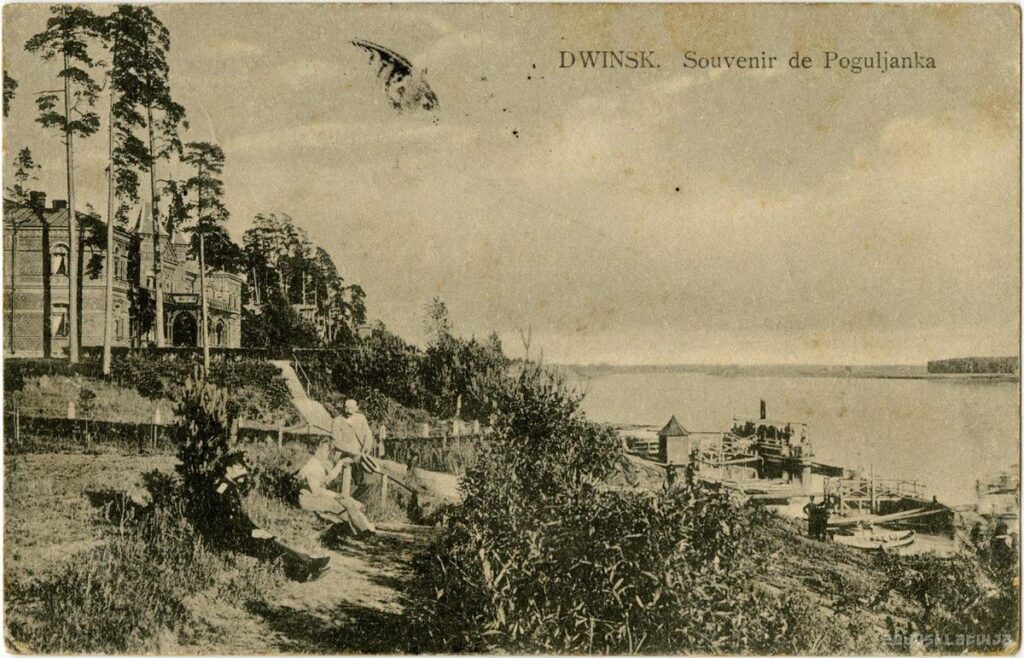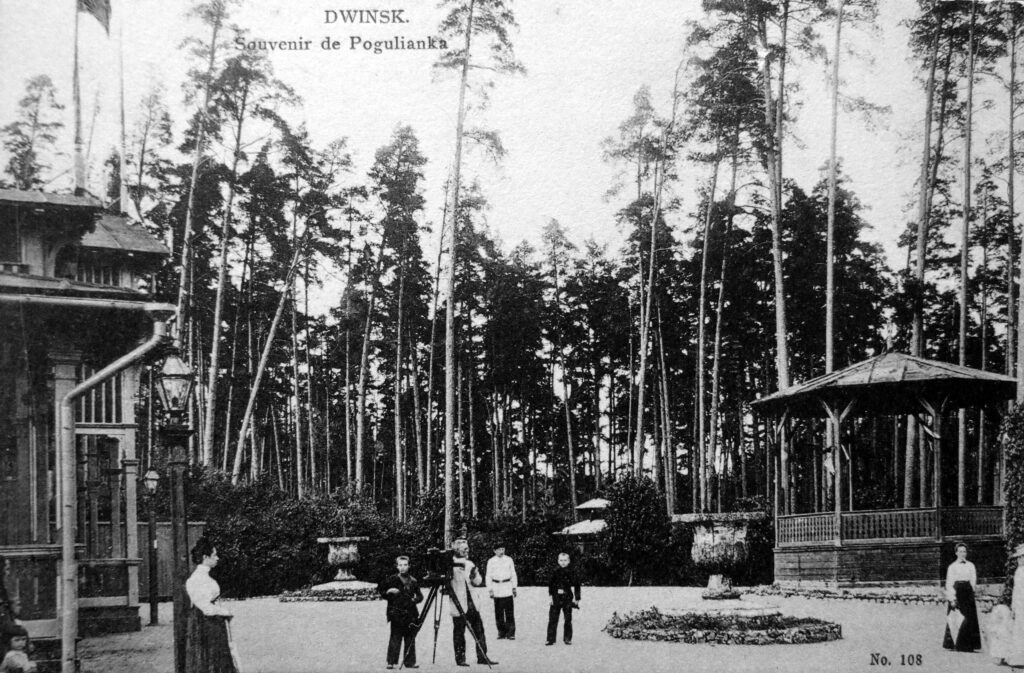Mežciems Park is a place for walking and relaxation in the historic sanatorium area in the Mežciems neighbourhood, which is situated on the picturesque banks of the Daugava River. The park is located 8 km from the centre of Daugavpils.
About Mežciems Sanatorium
The history of Mežciems Sanatorium began in 1883, when the Poguļanka water and kumis healing resort was opened on the banks of the Daugava River. Its founder was Count Jan Kazimierz Jozef Plater-Zyberk (1850-1922), owner of the Līksna estate. Since then, Poguļanka (the name of the area until 1937) has been known as a health resort.
The healing resort used a special drink called kumis, made from mare’s milk, therapeutic mud taken from the nearby Trikartu lakes, and mineral water. Kumis was made on site in Poguļanka, where 90 mares were kept specifically for the production of mare’s milk, which was poured into large baths to be turned into kumis.
In 1886, the Count established a steamboat route between the city and the resort.
At the beginning of the 20th century, there was a large water, mud, and air baths building, a kumis and kefir “institution”, an eye clinic, its own pharmacy, library, theatre, and much more. A well-maintained park was established for walks in Poguļanka, which was lit by electric lamps in the evening hours, as the resort had its own power station.
The early 20th century until World War I was the golden age of the resort, both as a health institution and as a magnificent and well-equipped place for recreation and entertainment. At that time, two steamboats and a motorboat already ran from Dinaburg to Poguļanka. Concerts and theatre performances featuring famous European artists took place here, as well as grand receptions hosted by Count Plater-Zyberk with balls and festive dinners.
After World War I, the resort was closed for a long time. The war had severely damaged the medical buildings and summer houses, and the situation was further affected by the agrarian reform that began in 1920, which meant that the Plater-Zyberk family lost the Līksna estate and extensive lands, including the resort.
In 1937, Poguļanka was renamed to Mežciems. In 1939, the building of the sanatorium was renovated. It had 27 rooms, where therapeutic mud and other procedures were carried out. People came to Mežciems for treatments from various cities in Latvia.
However, further development of this place was interrupted by World War II. From 1947, the sanatorium began treating tuberculosis patients and organising pioneer camps, and from 1959, it began treating patients with cardiovascular diseases. In the early 1990s, the Mežciems Sanatorium was closed.
The sanatorium territory today
Currently, the Mežciems Park territory is cleaned. The park is a great place for peaceful walks, exploring history, and enjoying nature. The historic sanatorium building and adjacent buildings, which can be viewed from the outside, give the strolls along the park paths a special atmosphere. The park offers a beautiful view of the Daugava River, making it a good place to enjoy nature in peace and silence. It is advisable to visit the park during daylight hours, as it is not illuminated in the evening.
How to get there:
From the city centre, take bus No. 4, No. 5, or No. 21. Get off at the “Mežciems” stop. For information about public transport, visit the page www.satiksme.daugavpils.lv.
Source:
Grīnuma, I. 01.07.2022. Kumisa un dūņu dziedinātāva Poguļanka (Kumis and mud healing centre Poguļanka). Illustrated World History. Retrieved here [viewed on 21.08.2025].
Photos from the archives of the Daugavpils Regional Studies and Art Museum.


